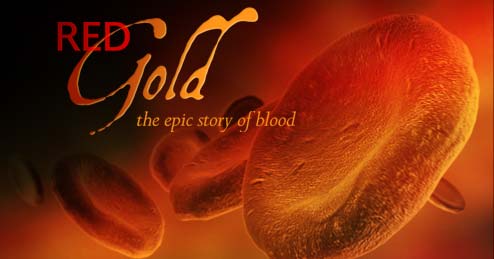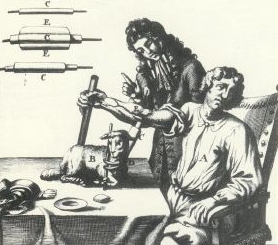|
|
|
The Blood is the Life
The Agony Column for June 19, 2002
Commentary by Rick Kleffel

|
|
|
The Agony Column for June 19, 2002
Commentary by Rick Kleffel

Readers of horror are supposed to like lots of blood. I can't say that's particularly true for this reader. For me, the attraction is somewhere in between the character's point of view and the horrors they witness. That ability that horror offers -- to concretize fears, to crystallize them into an external force, which can be defeated -- is for me the prime appeal. Still, if you like blood, and lots of it, it's always on offer. And works about vampires are being adapted to film at an alarming rate, probably because vampire makeup is a lot cheaper than a suit-man monster.
 |
|
Mark Pellington's movie of 'The Mothman Prophecies' has just been released on DVD. It's worth seeing again on the small screen. |
Screen adaptations often fall flat. A recent exception just released on DVD is 'The Mothman Prophecies', which in retrospect grows rather than shrinks in appeal. I had read the book years ago, and always thought it had potential for a great movie, though I never thought it would come out the way it did. I fell for the goofy, funny aspects of the book, the absurd entities and the spectacle of saucer culture it offered. Director Mark Pellington highlighted the spooky, scary undertones of Keel's work and to my mind has created an effective chiller on little or no budget. On viewing it via DVD, at home, the best, smaller parts of the story come out, and Pellington's use of effective, repetitive imagery is more easily appreciated. Also enjoyable are the performances and the screenplay, absent of any spurious sex and violence and concentrating on the story and characters. I suspect that there's still a Tim Burton directed documentary in the material; something funny and sunny and absurd, but as an adaptation of a horrific true story to the screen, 'The Mothman Prophecies' deserves and rewards a second look -- but no more so than the original book by John Keel.
 |
|
'Red Gold', the new PBS series promises to be an entertaining adaptation of Douglas Starr's 'Blood: An Epic History of medicine and Commerce'. |
Readers looking for buckets of non-fictional blood adapted to the small screen will have to look no further than their local PBS station this weekend for an adaptation of Douglas Starr's wonderful, mind-boggling 'Blood: An Epic History of Medicine and Commerce', adapted as 'Red Gold: The Epic Story of Blood'. There's a nice website up and running devoted to the series, under the PBS umbrella. It has all the makings of an excellent series. I'd read the book when it first came out, and it pretty much disappeared off the map after I reviewed it for Andy Fairclough's 'Masters of Terror'. I'd rather wondered what had happened to the book and the author, as it had seemed particularly good at the time. However, I also knew that it was possible that I was somewhat prejudiced in my estimation of the book.
After all, I started out my professional career as a reviewer covering the horror genre. Blood is pretty important in the horror genre, though as I said above, it's not my cup of tea, so to speak. When you actually get into 'Blood: An Epic History of Medicine and Commerce', you'll find that many portions of it read like scenes from a particularly fantastic horror movie -- but everything is real and quite well documented. Nearly a quarter of the book consists of explanatory notes and documentation that the events Starr describes are true. In an NPR interview yesterday, Starr commented that he found his own research results so incredible that he took special care to document them, to ensure that he wasn't making mistakes.
 |
|
These days, we just use television to turn people into sheep. But in the 1600's, they tried transfusions of animal blood into humans. There's not saying when we'll get back to that technology. |
Reading the book, you can see why. His story of the first transfusion, from a cow to a madman, in hopes the 'humours' of the cow's blood would calm the violent outbreaks of the madman is a good example. In 1667, Jean-Baptiste Denis, a physician to Louis XIV, first drained about 10 ounces of blood from the patient using a silver tube. He then hooked up the tube to the artery of a cow, and let about a cup of blood flow into his patient. Miraculously, the patient survived. But when the patient later died, his wife sued the doctor and the result was a virtual halt in transfusion technology for 150 years, even though it later was proved that the wife, tired of being beaten, had systematically poisoned her husband with arsenic.
Then there is Richard Lower, an English doctor who "'..selected a medium sized [dog] and drew off its blood from an exposed jugular vein,' he wrote. He drained as much blood as he could without killing it. 'The dog first set up a wailing but soon its strength was exhausted and convulsive twitchings began.' Meanwhile, he had bound a large hound to a second bench, bared one of its neck arteries, and stitched it to a reed; then he attached the other end of the reed to the smaller dog's jugular vein. He opened a ligature and let the blood flow, until 'neither blood nor life remained' in the hound...Now he witnessed something that, given the beliefs and science of the time [1666], must have been an astonishing sight. The smaller dog virtually came back from the dead, as though the hound's life force had filled it up again."
|
|
|
Douglas Starr's exceptional book 'Blood' will horrify and inform you. |
Now I haven't gone beyond page 20 of this excellent book; there are another 330 pages of astonishing facts you might not want to have known about blood. Between Russian transfusions from cadavers to living patients and the contamination of the blood supply with the HIV virus, the book covers a range of horrors that is incomprehensible to the average vampire fan. He doesn't cover some of the more recent vampire murders and psychotic episodes because he has much bigger fish to fry: the global business of blood.
|
|
|
Blood plasma can be separated into differing fractions, which can be sold for various products. |
This is why, beyond the mere factual horror, I pursued this book from the second I saw it in the bookstore. It had a word in the dust jacket that I had not seen outside of my own work experience: fractionation.
When I left college, I found myself presented with two employment opportunities. One was to write technical documentation for Teledyne Waterpick, the folks who make those shower heads you currently see in saturation advertising on television. It paid less per hour than a job manning the fryolator. The other opportunity was to work for Alpha Therapeutic, at their blood plasma fractionation plant located in Monterey Park, California five miles as the smog lies from the squalor of downtown LA. It paid nearly three times as much per hour, and offered ample overtime. In short order, I became a blood plasma fractionation technician.
What this entailed was essentially sterile heavy industrial work in an environment of -10 degrees centigrade alcohol fume laden air requiring ear protection from the incredibly loud Sharples centrifuges used to fractionate the blood. I spent five years in the company of 500-liter stainless steel vats of human plasma, fortunately well before the HIV infection spread into the blood supply. They were memorable years of my life. One time I took a friend who was working for the Aerospace Corporation for a tour of my working environment. He ran through the refrigerators that I spent ours in in a state of palpitating terror. The noise, the fumes, the cold, the huge stainless steel vats of plasma -- it freaked him out. But to me it was business as usual. It's amazing what humans can become used to.
|
|
|
For five years I wore the sterile clothes pictured in this photo. It's from our competitors, Abbot Research, nearby the Monterey Park Facility of Alpha Therapeutic. |
In fact, Starr mentions my former employer, Alpha Therapeutic, which was acquired by Japan's Green Cross Corporation while I worked there. I admit, I never saw a donor bag or anything remotely red, though I did work with the Industrial engineering department while they worked on their artificial blood. The substance they developed was used by James Cameron for the famous 'breathing water' scene in 'The Abyss', and I saw my share of "amphibian rats" in the lab. Fifteen years later, "artificial blood" is still a dream.
I often worked swing and graveyard shift, as the pay took another significant leap for those who were willing to work the off hours. On holidays, I would wander around the enormous plant alone, carrying a set of cheap portable synthesizers and tape recorders around on a sterile cart, recording the sounds of blood plasma being kept stable and ready to productize. I set up computer systems and engineered work studies to increase yield. The most valuable product we extracted from the blood was albumin, a yellowish paste found underneath a layer of translucent orange fat in the ancient centrifuges.
I was ready to read about blood. NO, I wasn't ready to bathe in it -- I'd come closer than most folks to doing so, however. In Douglas Starr's 'Blood', I got my fill, the perfect quantity and the highest quality. Now, you don't even have to read the book -- you can just sit and take it in on the television. I don't recommend viewing as a substitute for reading, but I have a good sense that the viewing experience will be rewarding. I can't say it will give the sense of having worked for five years in the industry, but it will bring an immense amount of understanding of an invisible industry that makes billions off the products of the human body. More than for most people, to me the blood is the life.
Thanks,
Rick Kleffel